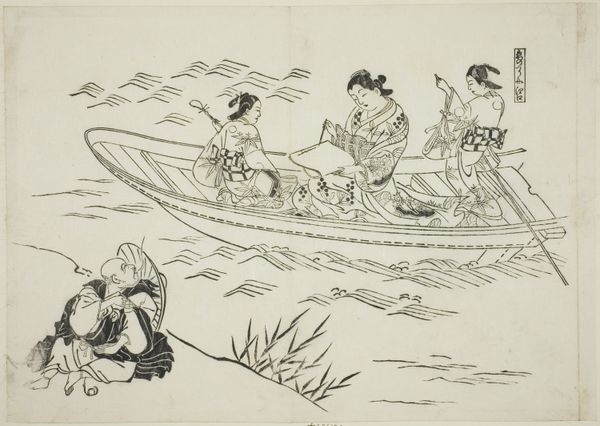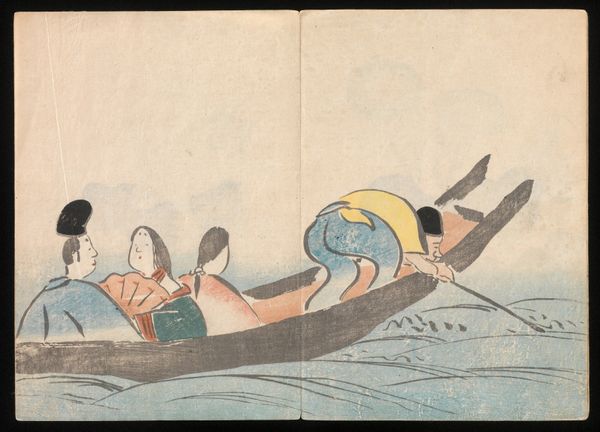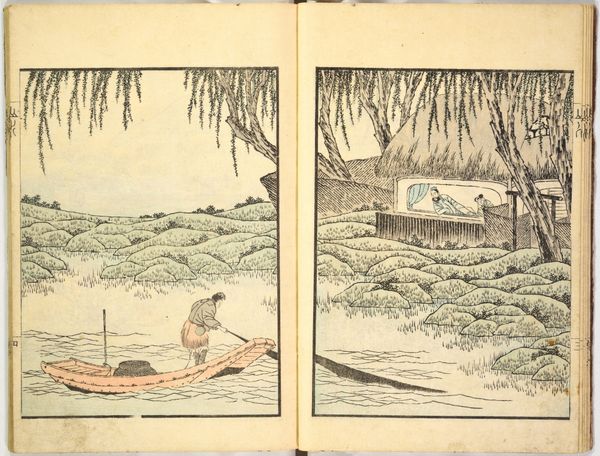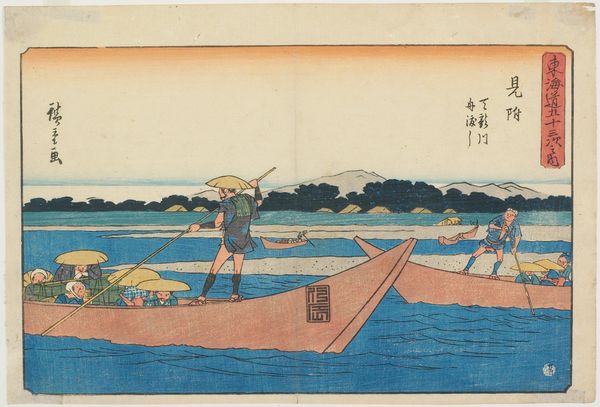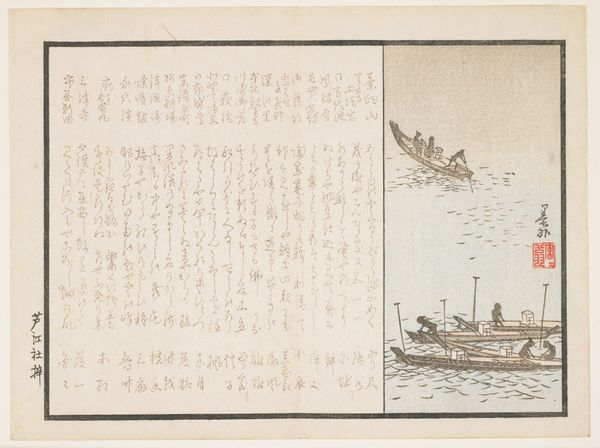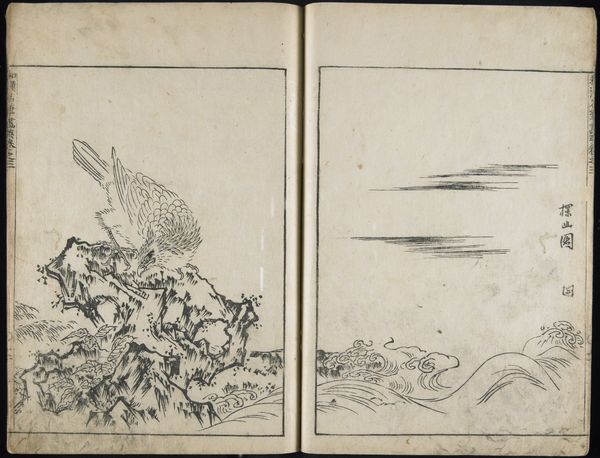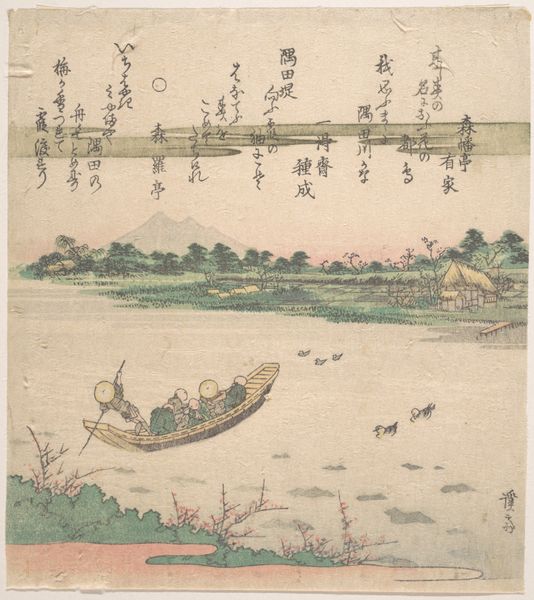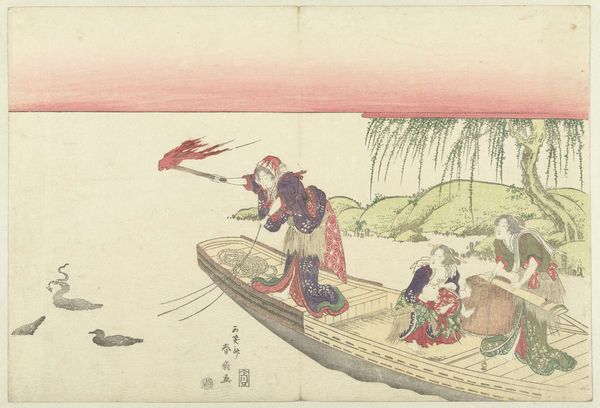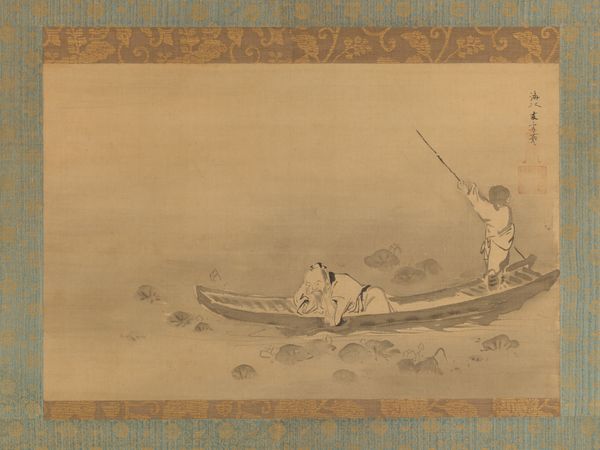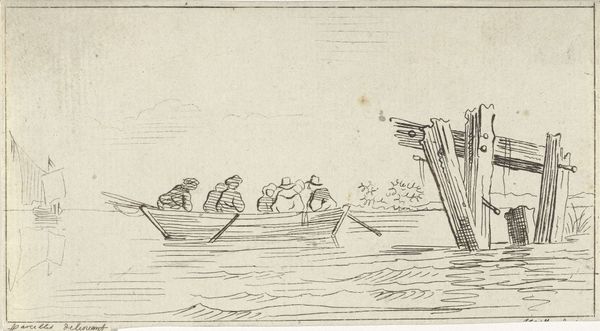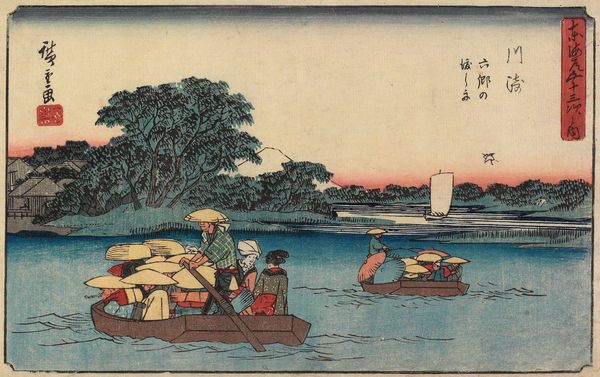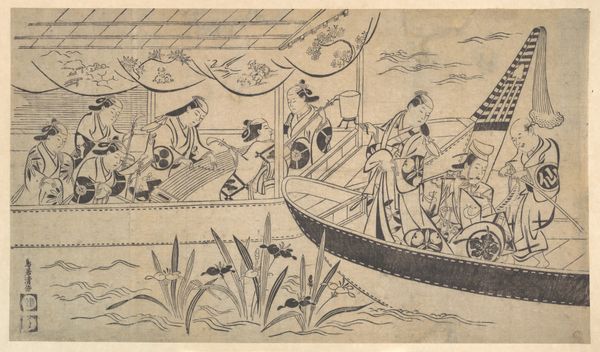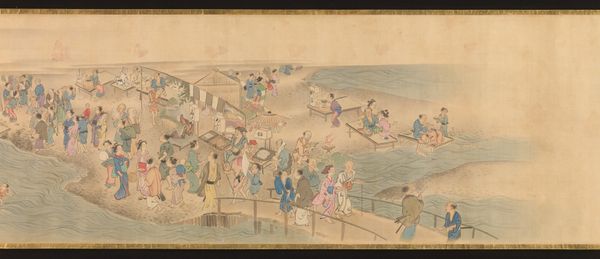
print, ink, woodblock-print
#
narrative-art
# print
#
book
#
asian-art
#
sketch book
#
landscape
#
ukiyo-e
#
japan
#
personal sketchbook
#
ink
#
woodblock-print
Dimensions: 9 x 6 1/4 x 5/16 in. (22.9 x 15.8 x 0.8 cm)
Copyright: Public Domain
Curator: This delicate book, open to a double-page spread, showcases Katsushika Hokusai's "Stations- Hokusai's Album of Travel Pictures" from around 1830. It's a woodblock print with ink, now residing at the Minneapolis Institute of Art. What are your immediate thoughts? Editor: The scenes convey a sense of movement and intimacy; the figures crammed into the boats create an immersive composition that invites observation. The peach colored background is an amazing complement to the blue tones in the water! Curator: I find it interesting that the work comes from an album, suggesting a private or portable experience. Hokusai’s prints and books reached a broad audience but these travel sketches almost feel like notes that could have informed some of the artist's larger productions. We know ukiyo-e prints helped create a sense of shared cultural identity in Japan. Do you see any of that here? Editor: Definitely. There's an intriguing narrative thread running through both scenes; it feels like encountering archetypes in travel rather than individuals. Look at the figure in the first panel aiming the stick toward a bird. Or, is he? What is he hunting? We see that shape used often in spiritual ceremonies to cast out evil and invoke luck. Perhaps both interpretations are correct, and maybe neither! It is the in-between state, I suspect, that gives this work its unique presence. Curator: I agree; it is complex. It’s easy to appreciate Hokusai’s draftsmanship, yet you've highlighted an interesting symbolic layer – the suggestion of spiritual undertones intertwined with the depiction of daily life and labor, and those wonderful pink colors. These touches must have resonated deeply. Editor: Precisely! And consider how even seemingly minor components such as mountains, the shore and boats all acquire significance in an imaginative setting. What else do you observe, perhaps regarding the cultural milieu or audience of this album? Curator: Looking at this, I appreciate how Hokusai manages to give these anonymous figures a sense of vitality and purpose as they work their way through landscape. The album form itself would have contributed to the intimate accessibility, furthering the democratic nature of art distribution at that moment. Editor: It's amazing how such seemingly simple lines can speak to broader experiences and evoke such powerful cultural symbols. I hadn't considered this album as an act of art distribution itself, but now, I must rethink that premise in terms of impact and context!
Comments
minneapolisinstituteofart almost 2 years ago
⋮
A bookshop owner shows a book to a warrior and his retinue. The rectangular sign at the front of the shop announces that it is a bookstore where one can buy and sell old, used books. Though illegible, the wooden slips hanging in rows likely advertise the bookseller’s inventory or new publications. During the Edo period, people had to obtain permission inorder to travel. Books like Hokusai’s Album of Travel Pictures allowed people to see sights and enjoy specialties that were otherwise often unattainable.
Join the conversation
Join millions of artists and users on Artera today and experience the ultimate creative platform.
